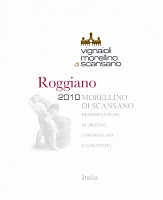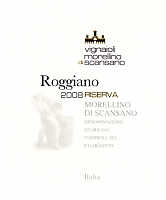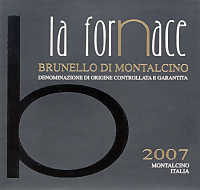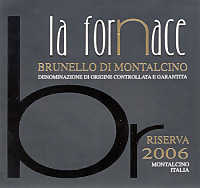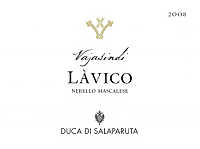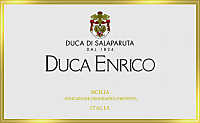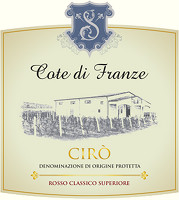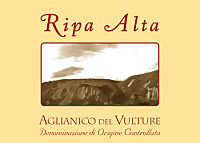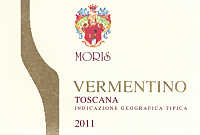|
Without sugar, or better to say, sugars, wine could not exist. Not only
essential elements for the production of one of the typical characteristics of
wine - alcohol - but also, and in particular, an element for reaching a balance
in the beverage of Bacchus. Let's clear this: wine does not mean alcohol and, of
course, wine is more than a simple alcoholic beverage. Sugar - more precisely,
the quantity found in the must and then in the wine - is fundamental both for
the organoleptic characteristics of wine as well as for its balance. The
presence or absence of sugar in wine determines its style and the organoleptic
orientation. If it is true a substantial quantity of sugar classifies the wine
as sweet and the absence - or a negligible quantity - classifies it as
dry, in between quantities create very particular sensorial profiles. On
this regard, we could think - for example - about sparkling wines and the many
sensorial differences created by the quantity of sugar found in a wine.
Sugar, in fact, is not found in “sweet” wines only, or at least, only in those
wines in which the organoleptic sensation of sweetness is dominant or clearly
perceivable. The perception of sweetness, just like any other gustatory
sensation, is purely relative and in function of the intensity of
antagonist or synergic stimuli. The lack of perception of a
sensation does not in fact mean the absence of the substance producing it, it
could also mean an organoleptic condition in which that specific substance is
efficiently contrasted - or balanced - by other substances. We can
think, for example, about certain wines produced with late harvested grapes and
which could contain a certain quantity of residual sugar - that is non fermented
sugars therefore capable of producing the sensation of sweetness - nevertheless,
the taste of these wines can also be defined as dry.
The appreciation of sweetness in wines - it should be said - has greatly changed
in the course of wine making history and in the evolution of taste in relation
to the beverage of Bacchus. If in past times, at the times of ancient Greeks, at
the beginning of enology, sweet wines were the most precious and appreciated
ones, today modern taste is mainly oriented towards dry wines. The present
production of sweet wines is in fact marginal in regard to dry and table
wines, caused by a lower demand and, therefore, a lesser interest of consumers.
To this should necessarily be added the economic factor, as the production of a
high quality sweet wine, produced with dried grapes, has very high costs,
therefore, a very high retail price. In past times, also after the introduction
of the practice of making dry wines, sweet wines - produced with dried grapes
and, most of the times, affected by noble rot - were considered the highest
expression of the god Bacchus and, just like today, they were very expensive
wines, destined to the glasses of noble and rich people only.
|
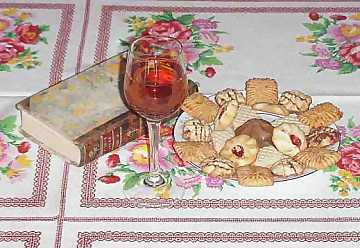 | |
| Not only cookies: sugar is a
fundamental element for wine balance | |
|
Sugar is essential for the production of wine; as a simple matter of fact,
without sugar, there would not exist wine nor any other fermented beverage. This
is not something associated to the primary product of fermentation only -
alcohol - but also, and in particular, to the remarkable chemical
transformations to which grape sugar undergoes during the journey which will
transform it into wine. The main responsible agent of alcoholic fermentation -
Saccharomyces Cerevisiae - thanks to the conversion of the sugar found in
grape juice, produces alcohol and carbon dioxide. Without sugar, therefore, wine
would not exist, and not even beer and bread, as to mention the most famous
examples of products obtained by the fermentation done by yeast. Not all the
sugars are the same and not all the sugars can be fermented by the same type of
yeast: each type of yeast - as a matter of fact - can convert specific types of
sugar only.
Before discussing the role of sweetness in wine sensorial tasting, let's try to
understand the origin of sugars found in grape juice and used in enology. In
nature, sugars - better defined as glucides - are essential elements to
ensure the survival of most of living beings. The search of glucides is one of
the main activities of living organisms, as they are useful nutrients for the
supplies of energy. Plants, and in particular their fruits, are generally rich
in sugar and make of them among the most common and looked for foods for most of
beings belonging to the animal species. Grape, of course, is no exception, as
inside of its small berries, when they reach full ripeness, can be found a
remarkable quantity of sugar. It must be said, this is not the common sugar, as
with this term is usually referred the so called table sugar, properly
defined sucrose.
In the berries of grape are found many types of sugar, however the main ones,
also representing the highest quantity, are glucose and fructose. Not all the
sugars found in grape's pulp are involved in the process of alcoholic
fermentation. Some of them - called unfermentable sugars - are not in fact
converted into alcohol and carbon dioxide, therefore leaving to the wine a
certain “sweetness”. This sweetness, produced by the so called residual
sugars, is not always perceivable to the tasting, both because they are
balanced by other substances, as well as because they are found in negligible
quantity and such not to reach the level of the threshold of perception. In some
cases, the fermentation process is stopped on purpose, therefore not allowing
the yeast to complete its job, leaving part of the fermentable sugar to the wine
that, also in this case, will make the fraction of residual sugars and
the organoleptic sensation of sweetness.
The presence of sugar in wine can be obtained in other ways as well. One of them
consists in adding to the wine - therefore to the product obtained at the end of
fermentation - a certain quantity of sugar in order to increase sweetness. It
should be said this practice, as a matter of fact, is forbidden by the laws of
most of wine making countries in the world and the only wines in which this is
permitted are sparkling wines. The more or less evident sweetness in sparkling
wines produced with the classic method is in fact obtained in this way, by
adding to the wine refermented in bottle, a mixture of wine, sugar and, in some
cases and according to the style of the producer, aged wine brandy. The quantity
of sugar added to sparkling wines - that in other wine styles would be enough to
cause a well perceptible sweetness sensation - is not always enough to make its
perception evident. In this particular wine style, carbon dioxide in fact plays
an efficient role of contrast against sugar, by lowering the relative perception
of sweetness.
There is also another way to obtain the presence of sugar in wine, a method
which can be considered natural. Fermentation, as already said, converts sugar
into alcohol and carbon dioxide thanks to the job done by yeast. Alcohol is
however a toxic substance and, although it is produced by yeast, its tolerance
for this element is however limited. When in the must is present a high quantity
of sugar - such as in case of must produced with overripe or dried grapes -
yeast finds abundant “food” while continuing the production of alcohol that
will end up intoxicating it and, therefore, this will stop the fermentation
process. The interruption of fermentation therefore leaves to the wine a certain
quantity of natural sugar which will give sweetness to the wine. On this regard
it should be noticed every type of yeast has its own tolerance towards alcohol
and some of them can also stand to exceptional quantities as high as 20% of
total volume. In general terms, an alcohol by volume higher than 17% is usually
toxic for most of yeast types.
The contribution of sugar to wine sensorial tasting goes beyond the
simply sensation of sweetness. By just considering it for the perception
of what it probably is the most appreciated “taste” for human beings, it would
simply be an error of unforgivable superficiality. Sugar mainly contributes with
the taste of sweetness - there is no doubt about this - however its role in the
overall profile in wine's taste is remarkably complex. Sugar - and more
precisely, sweetness - plays a fundamental role in the balance of many
elements, on the other hand, it needs to be properly balanced in order not to be
excessive. The right sweetness, in the sense of balanced, in fact gives
the wine a rare “noble” and “aristocratic” dimension, whereas its unbalance
because of the excess, make the wines completely ungraceful, flat as well as
cloying.
Among the substances found in wine, sugar creates a particular relation of
balance with acid substances. Acidity is in fact the primary organoleptic
quality capable of effectively balancing sweetness. For the sake of
comprehensiveness, the action of balance done by a substance towards another, it
is never referred to the alteration of the quantity of each element found in
wine. Balance is the action of sensorial contrast having as an effect, not the
diminishing of the quantity of a certain substance, but the alteration of its
perception, therefore making the sensation balanced and
harmonious according to the other ones. A good example is offered by
lemon juice. This substance, with an acidic and sour taste, has an excellent
gustatory balance with the adding of a substance of sweet taste. By adding
sugar, the quantity of acid substances does not diminish, however the gustatory
sensation is made more tolerable, that is balanced, by sweetness.
If it is true sweetness is capable of making acidity more tolerable, acidity has
the property of making sweetness more pleasing and less cloying. For this
reason, the most important quality in sweet wines is not necessarily represented
by the quantity of sugar, indeed by the quantity of acid substances capable of
properly balancing sweetness, therefore avoiding the wine to become cloying.
Also carbon dioxide plays an effective role of contrast towards sweetness. In
general terms, the action of carbon dioxide lowers - even significantly - the
perception of sugar, and the wine, or any other beverage, will be perceived less
sweet than it really is. We should think, for example, to a soda drink: when the
effervescence is clearly perceptible, sweetness is less intense; by allowing
carbon dioxide to get dispersed, because of the effect of shaking, sweetness
will be more intense, even cloying.
The same principle is applied, of course, to sparkling wines: despite they
frequently contain an appreciable quantity of sugar, because of the effect of
carbon dioxide, they could also be perceived as dry to the taste. Among
the substances found in wine, in particular in red wines, sugar tends to make
more tolerable the astringency of tannins, however the combination
tannins-sugar, in case it is not properly controlled, can sometimes be
unpleasant to the taste. Temperature is among the factors altering the
perception of sweetness. The perception of sweet substances will be more intense
as the temperature increases, whereas extremely low temperatures can also
eliminate their perception. A sweet wine served cool will therefore be less
sweet, whereas it can also become cloying in case it is served at a high
temperature, even in case of a wine having a small quantity of residual sugar.
Finally, among the substances found in wine, it should be noticed ethyl alcohol
- besides producing the characteristic tactile burning sensation - has also a
basically sweet taste which contributes to the overall sweetness of wine.
|


